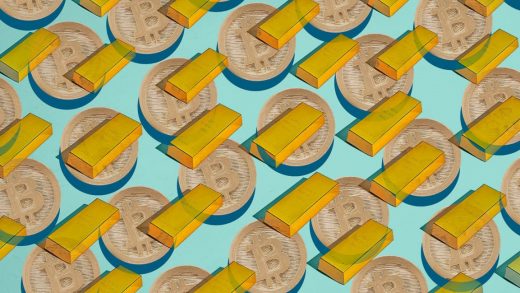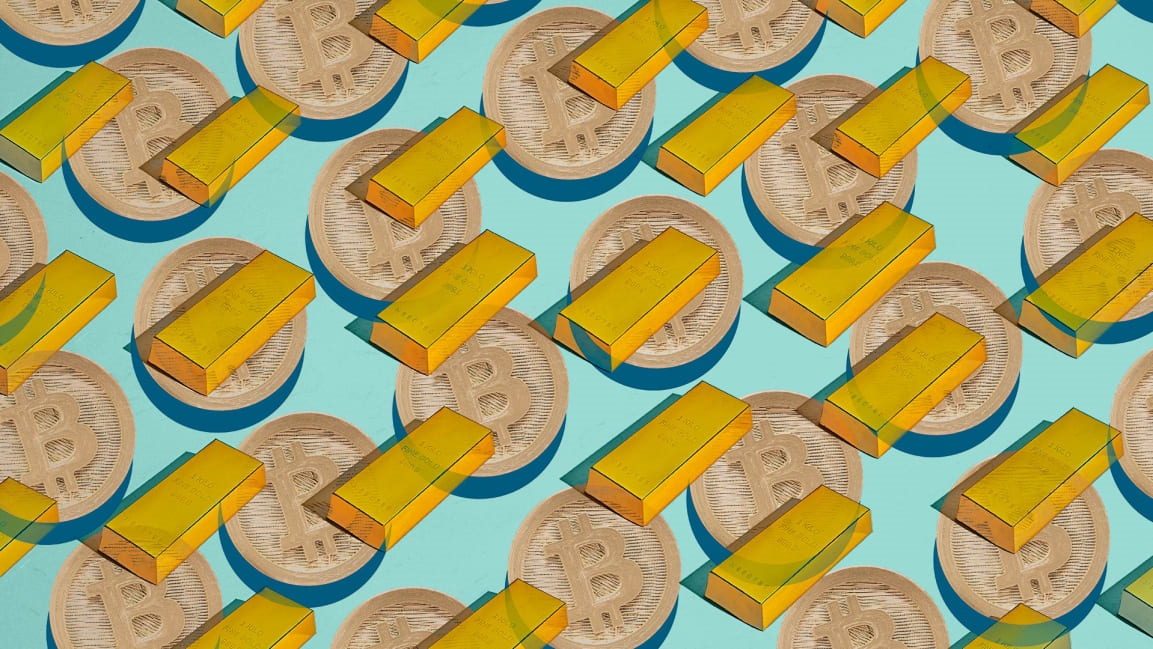Bitcoin vs. gold: Scholars compared crypto to commodities. Here’s what they found
Recently, a marketing trend has emerged around big brands suddenly declaring they will accept cryptocurrency as payment for various consumer goods: video games, movie theater tickets, Kentucky Fried Chicken, Dallas Mavericks jerseys, flights on Norwegian Air, Teslas.
But you have to wonder how many people with large stakes in crypto are actually spending it on trivial pursuits like a pair of Pacsun jeans from the mall. In fact, some crypto advocates might argue that treating the asset exactly like a fiat currency—some next-gen evolution of the paper dollar—misses the mark. In this economy, crypto isn’t used to buy goods so much as it’s bought to grow and store wealth—much like a stock market portfolio or a vault of gold bullion.
Unlike crypto, however, gold has remained a dependably valuable asset for thousands of years. Five centuries ago, Spanish conquistadors slaughtered the Aztec Empire to loot its precious metals; today, gold is mined to flaunt riches in myriad forms—rings, chains, toilets, teeth. On the other hand, Bitcoin, which was created in 2008 as a practically worthless means of payment, has stayed that way for over half its short life thus far. In the mid-2010s, you could use it to buy 1/5,000th of a pizza; then, in 2021, it hit a record price of nearly $70,000 per coin.
Its unpredictability and extreme volatility would seem to implode the argument for Bitcoin as a legitimate gold-like commodity, but a new study—intriguingly, from a Polish institute for nuclear physics—supports the case that crypto is trending in the right direction. Although buying cryptocurrency was previously like venturing into the wild Wild West, this new research suggests the market has begun to coalesce into something like a unified beast, where the rise or fall of one token correlates to the movement of other tokens, too. The observed effect—in which tokens are not independent, but can “see” and interact with each other—resembles behavior exhibited by both stock markets and commodities markets globally.
But wait, there’s more. A statistical analysis revealed that the crypto market’s course, following the start of the COVID-19 pandemic, has actually begun to mirror those of more traditional investments. According to the team, the crypto economy between 2020 and 2021 showed the strongest correlation to the S&P 500, the leading U.S. stock index.
“Synchronisation can also be seen with markets for other commodities, such as oil, copper, and gold,” said Marcin Watorek, a coauthor of the study, who also noted that no such correlations existed before the pandemic. (In a release, the authors mused that increased nervousness from early-pandemic investors could have caused the parallel trajectories, as fluctuations in stock markets often result from an obscure combination of trading algorithms and the psychology of investors.)
Crypto’s growing likeness to the commodities market, rather than the currency market, honors its origins as an asset designed to resist manipulation from central authorities, such as national banks—as a buffer against inflation, for example. But crypto is still violently speculative, and thus, a far cry from the golds and silvers of the world.
“However, we should remember that nowadays there are strong changes in the prices of precious metals, and yet they are perceived as relatively safe instruments,” said Jaroslaw Kwapien, another coauthor of the study. “So there is a chance that the perspective about some cryptocurrencies will also change someday.”
(27)



